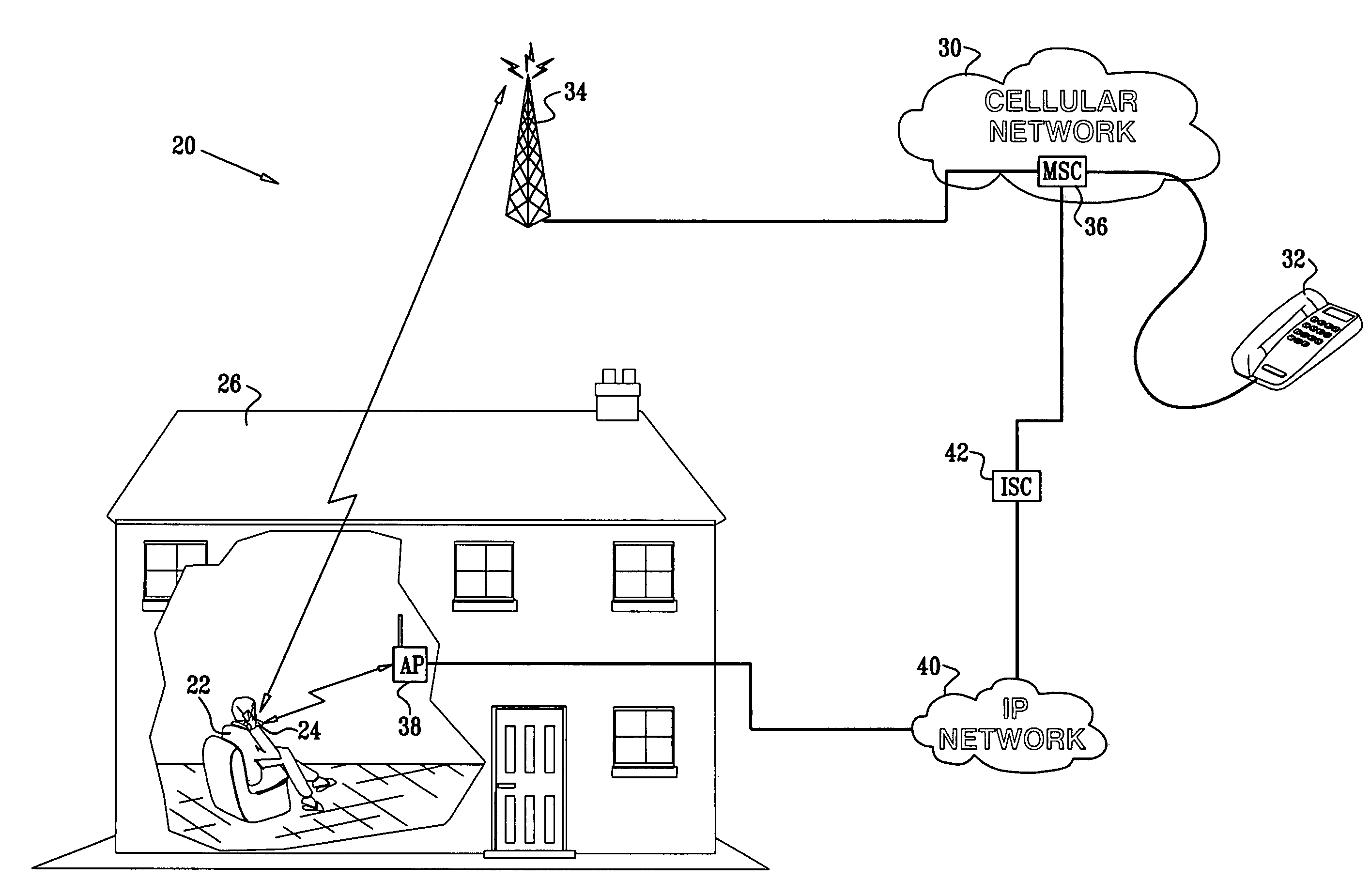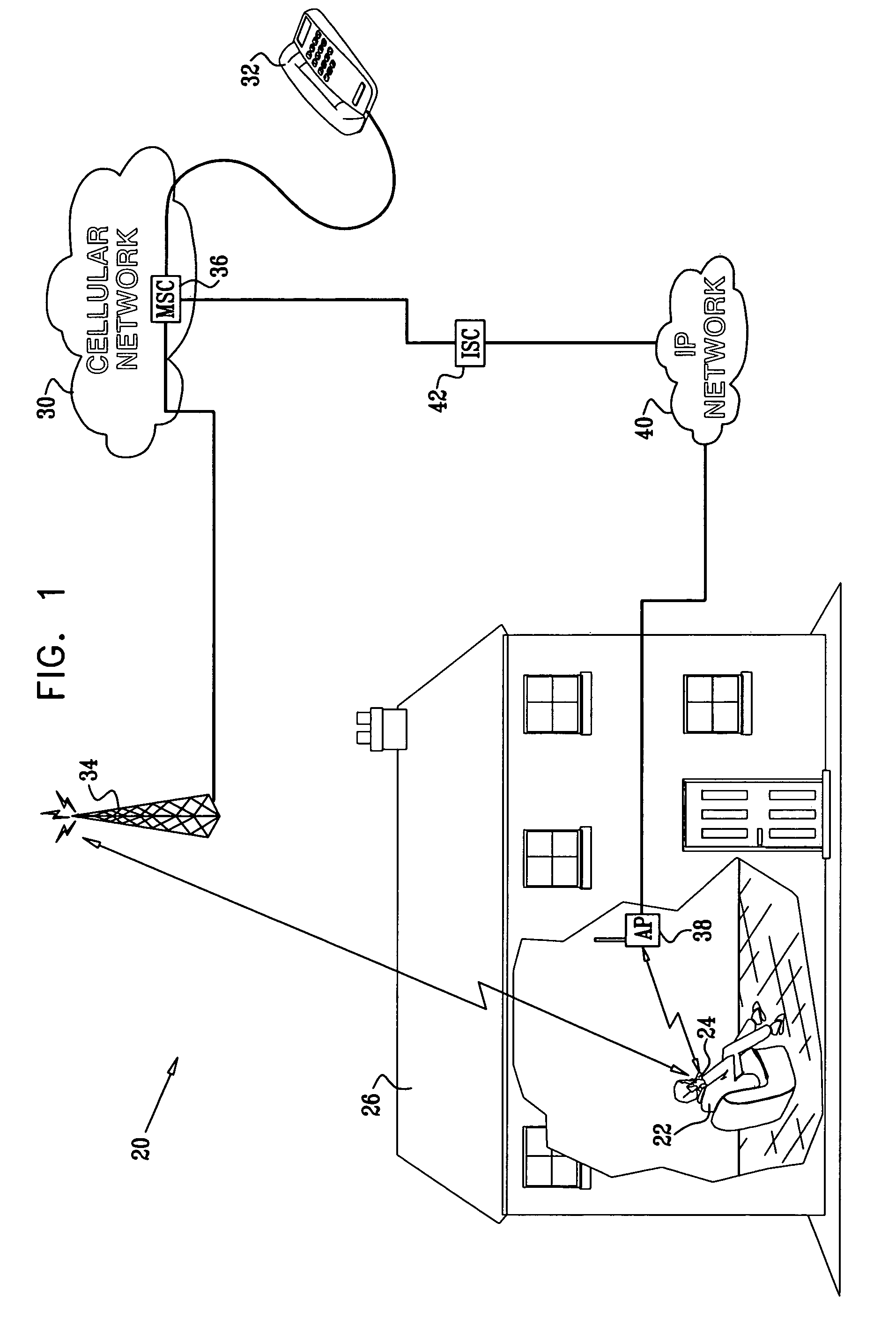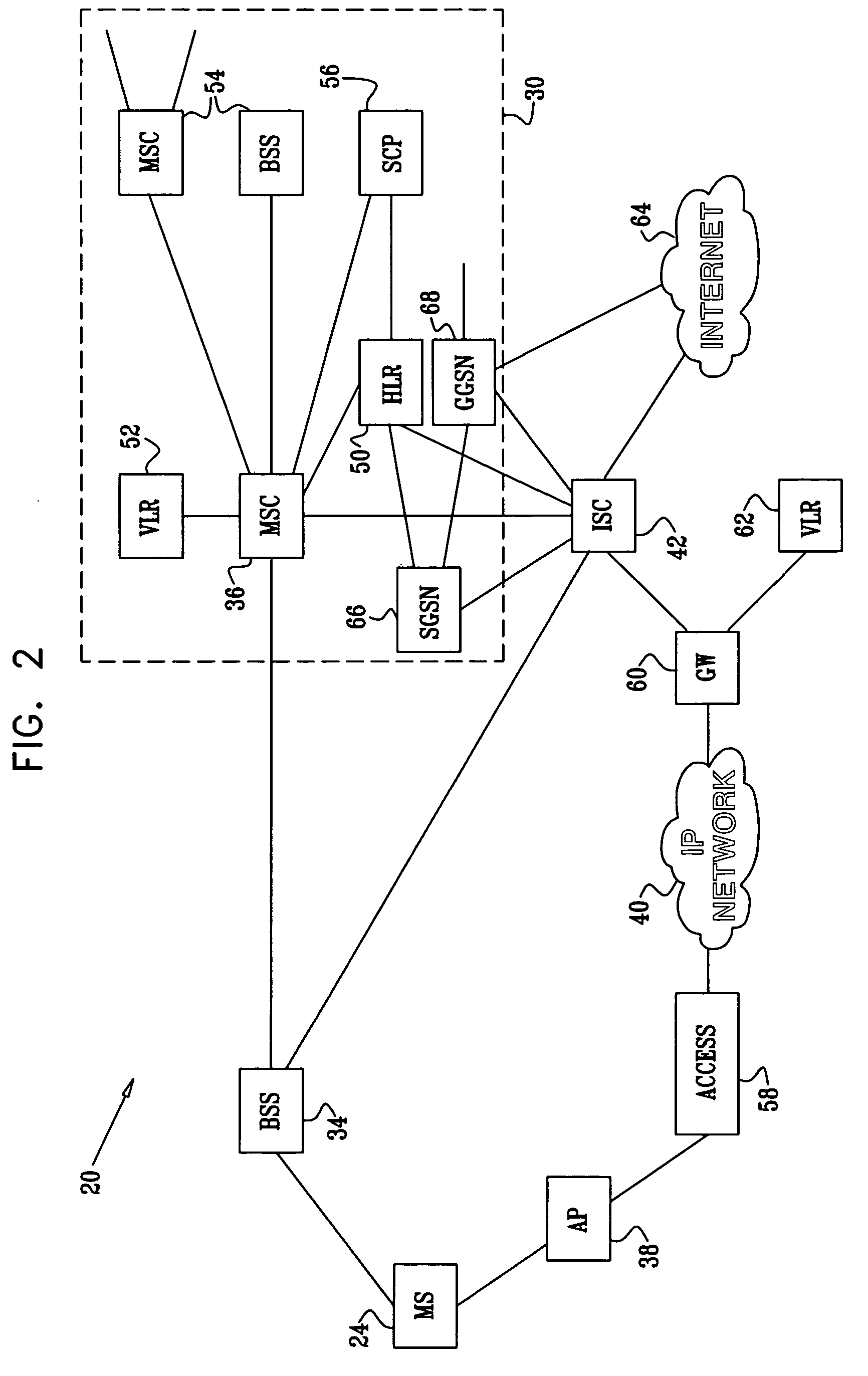Cellular network service over WLAN
a cellular network and wlan technology, applied in the field of wireless communication, can solve the problems of slow handover from wlan to cellular network, degraded qos provided by ancillary network connection, degradation, etc., and achieve the effect of constant transmission bandwidth, maximizing the number of calls carried, and minimizing the volume of data traffi
- Summary
- Abstract
- Description
- Claims
- Application Information
AI Technical Summary
Benefits of technology
Problems solved by technology
Method used
Image
Examples
Embodiment Construction
[0052]FIG. 1 is a schematic, pictorial illustration of a hybrid communication system 20, in accordance with an embodiment of the present invention. In the scenario shown in FIG. 1, a telephone user 22 in a building 26 places (or receives) a call on a mobile station 24 via a cellular telephone network 30 to (or from) another subscriber telephone 32. The call is established via a radio connection between telephone 24 and a cellular base station 34. Signals are transmitted between the base station and a switch 36 in network 30, and from the switch to telephone 32.
[0053]In this embodiment, network 30 is assumed to be a second-generation cellular voice network, such as a GSM or CDMA network, and switch 36 is identified for convenience as a mobile switching center (MSC). Alternatively, network 30 may comprise a 3G or other cellular packet network, such as a CDMA2000 or UMTS network, in which case base station 34 could comprise a radio network controller (RNC), while switch 36 comprises a ...
PUM
 Login to View More
Login to View More Abstract
Description
Claims
Application Information
 Login to View More
Login to View More - R&D
- Intellectual Property
- Life Sciences
- Materials
- Tech Scout
- Unparalleled Data Quality
- Higher Quality Content
- 60% Fewer Hallucinations
Browse by: Latest US Patents, China's latest patents, Technical Efficacy Thesaurus, Application Domain, Technology Topic, Popular Technical Reports.
© 2025 PatSnap. All rights reserved.Legal|Privacy policy|Modern Slavery Act Transparency Statement|Sitemap|About US| Contact US: help@patsnap.com



